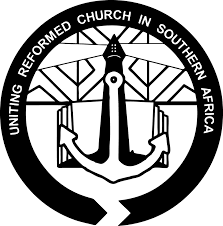| |||||||||
| Decades: | |||||||||
|---|---|---|---|---|---|---|---|---|---|
| See also: | |||||||||
The following lists events that happened during 1845 in South Africa .
| |||||||||
| Decades: | |||||||||
|---|---|---|---|---|---|---|---|---|---|
| See also: | |||||||||
The following lists events that happened during 1845 in South Africa .

Douglas is an agricultural and stock farming town situated near the confluence of the Orange and Vaal Rivers in the Northern Cape province of South Africa. Notably the rural town has a diverse population, with mostly state institutions and the anchor private employer, GWK, an agricultural company.
The following lists events that happened during 1834 in South Africa.

Alice is a small town in Eastern Cape, South Africa that is named after Princess Alice, the daughter of the British Queen Victoria. It was settled in 1824 by British colonists. It is adjacent to the Tyhume River. It has a rail and road connection to East London, Qonce and other towns in the province. It forms part of Raymond Mhlaba Local Municipality.

The Uniting Reformed Church in Southern Africa was formed by the union of the black and coloured Nederduits Gereformeerde Kerk mission churches.
The United Congregational Church of Southern Africa (UCCSA) is a prominent Christian denomination established in 1967, following the unification of various congregational movements within Southern Africa. Its origins can be traced back to the missionary work of the London Missionary Society in the Cape Colony in 1799. The UCCSA plays a significant role in the religious landscape of Southern Africa, with a membership of approximately 500,000. It maintains a notable presence in countries such as South Africa, Mozambique, Botswana, Zimbabwe, and Namibia. The UCCSA is recognized for its contributions to education and social justice in the region.

The South Africa Sevens is an annual rugby sevens tournament that is held in South Africa. It is currently hosted in Cape Town and is part of the Sevens World Series run by World Rugby. A South African leg of the World series has been included in every edition of the competition since it began in the 1999-2000 season.
Döhne is a South African agricultural research station 6 kilometres north of Stutterheim in the Eastern Cape. It is noted for having developed the Döhne Merino from Peppin Merino ewes and German mutton merino sires in 1939. The program bred for high fertility, rapid lamb growth and fine wool production under pastoral conditions. The breed was introduced to Australia in 1998.

Vanrhynsdorp is a town located in the West Coast District Municipality of the Western Cape province in South Africa. Considered the oldest and most southern European-settled town in Namaqualand, Vanrhynsdorp serves as a gateway to the Succulent Karoo and Nama Karoo regions to the north and east.

Haarlem is a settlement in Garden Route District Municipality in the Western Cape province of South Africa.

Qumbu is a town in OR Tambo District Municipality in the Eastern Cape province of South Africa.

The Coloured Persons Communal Reserves Act of 1961, was an Apartheid South Africa piece of legislation, which was enacted to apply the Mission Stations and Communal Reserves Act 1909, of the Cape of Good Hope, to coloured persons settlement areas within the meaning of the Coloured Persons Settlement Areas (Cape) Act, 1930, to repeal the latter Act and to provide for matters incidental thereto.
Calderwood is a village in Amathole District Municipality in the Eastern Cape province of South Africa.
St Mark's, Eastern Cape is a town in Chris Hani District Municipality in the Eastern Cape province of South Africa. Village on the White Kei River, about 15 km west of Cofimvaba and 40 km north-east of Cathcart.

Three missionaries of the Church of Jesus Christ of Latter-day Saints started proselyting to white English-speaking people in Cape Town in 1853. Most converts from this time emigrated to the United States. The mission was closed in 1865, but reopened in 1903.The South African government limited the amount of missionaries allowed to enter the country in 1921 and in 1955. Starting around 1930, a man had to trace his genealogy out of Africa to be eligible for the priesthood, since black people were not permitted to be ordained. In 1954 when church president David O. McKay visited South Africa, he removed the requirement for genealogical research for a man to be ordained, stipulating only that "there is no evidence of his having Negro blood in his veins".
Clarkson is a town in Kou-Kamma Local Municipality in the Eastern Cape province of South Africa.

South Africa – Sri Lanka relations refers to the current and historical relations between South Africa and Sri Lanka. The Government of South Africa established its resident diplomatic mission in Colombo in September 2007. HE Sirisena Amarasekara is the current Sri Lankan High Commissioner to South Africa while HE Ms RP Marks is the current South African High Commissioner to Sri Lanka. Both countries are members of the Commonwealth of Nations.

The South African Sendinggestig Museum was established in 1977 and is currently situated in the centre of Cape Town, Western Cape, South Africa. It is a province-aided museum which receives support from the Government of the Western Cape Province.
The following index is provided as an overview of and topical guide to the protected areas of South Africa:
The Jacob Gitlin Library in Cape Town, South Africa is an archive of information on Judaism, Jewish culture and history, and the nation of Israel. It was founded under the auspices of the South African Zionist Federation in 1959.

The Embassy of the Republic of Indonesia in Pretoria is the diplomatic mission of the Republic of Indonesia to the Republic of South Africa and concurrently accredited to the Republic of Botswana, the Kingdom of Eswatini, and the Kingdom of Lesotho. The embassy is located at 949 Francis Baard Street in the suburb of Arcadia, Pretoria. Indonesia also has a consulate general in Cape Town and an honorary consulate in Mbabane, Eswatini.
See Years in South Africa for list of References